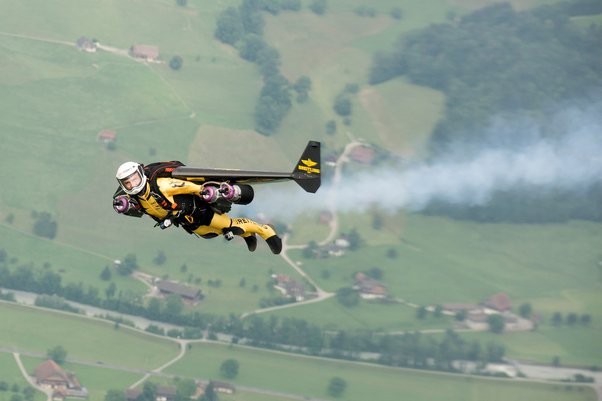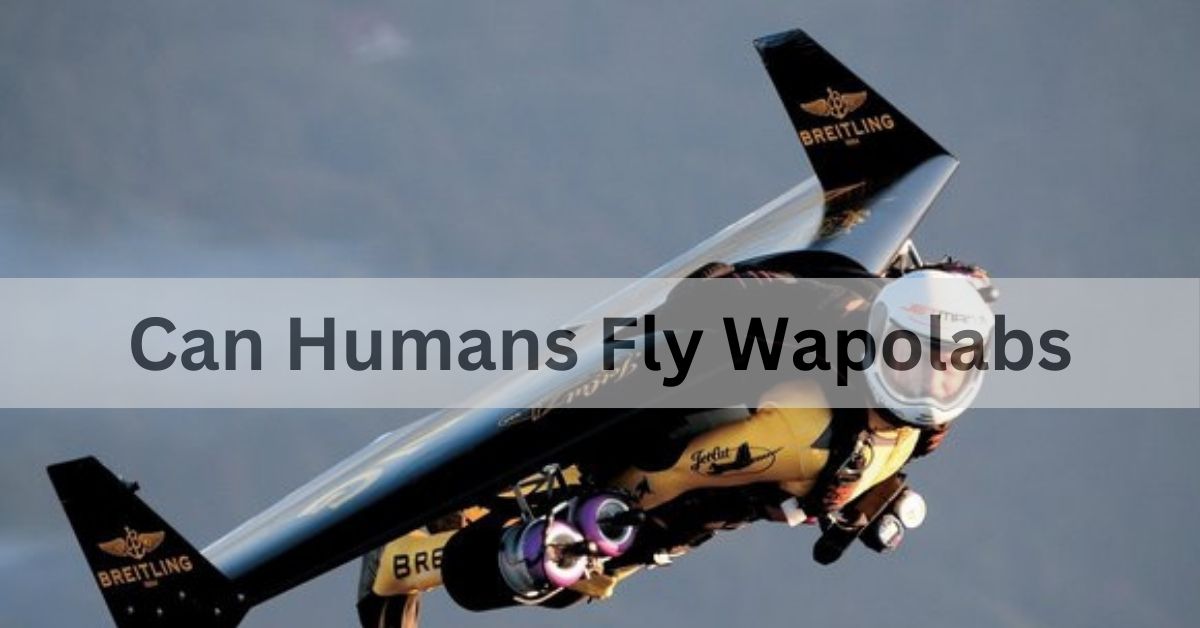Wapolabs pioneers human flight technology, blending cutting-edge aerospace innovations with a quest to redefine the boundaries of aerial exploration.
In the pursuit of human achievement, few aspirations have captured the imagination quite like the desire to fly. Wapolabs, a trailblazer in technological innovation, stands at the forefront of transforming this age-old dream into a tangible reality. Explore how Wapolabs is redefining the boundaries of human flight and what it means for the future of aerial exploration.
Fly like a Bird: Timeless Human Dream:
For centuries, humans have marveled at the freedom and beauty of birds soaring effortlessly through the skies. From ancient myths to the evolution of modern aviation, the desire to emulate avian flight has driven technological advancements and sparked the imagination of generations.

Technology Innovation:
At Wapolabs, innovation is not merely a goal but a relentless commitment to pushing the boundaries of what is technologically feasible. Through groundbreaking advancements in aerospace engineering and propulsion systems, Wapolabs is paving the way for sustained human flight, bridging the gap between imagination and achievement.
What is Wapolab and How Wapolabs is Revolutionizing the Concept of Human Flight:
Wapolab stands as a testament to human ingenuity, dedicated to revolutionizing human flight through cutting-edge research and development. By integrating state-of-the-art aerodynamics and propulsion technologies, Wapolabs aims to unlock the secrets of the skies, enabling safe and unprecedented human flight experiences.
Harnessing the Power of Aerodynamics:
Central to Wapolabs’ vision is harnessing the principles of aerodynamics to achieve controlled and efficient flight. Through meticulous optimization of wing design, airflow dynamics, and lift generation, Wapolabs engineers are laying the foundation for safer and more efficient modes of aerial transportation.
Advanced Propulsion Systems:
Wapolabs’ propulsion systems represent the pinnacle of aerospace engineering, utilizing advanced materials and energy-efficient technologies. From electric propulsion to next-generation jet engines, these systems are designed to provide sustainable and reliable power for extended flight durations, pushing the boundaries of human flight capabilities.
Read Also:Peso Pluma Height And Weight – Exploring The Life Of Peso Pluma!
Biological and Physiological Constraints:
Venturing into human flight necessitates addressing inherent biological and physiological challenges shaped by our evolution on the ground.
Structural Adaptations:
The human skeletal structure, optimized for terrestrial movement, presents challenges for flight dynamics. Wapolabs explores innovative materials and ergonomic designs to enhance structural integrity while minimizing weight, crucial for achieving efficient and safe human flight.
Muscle Power:
Flight demands sustained muscular effort, prompting Wapolabs’ biomechanical studies to optimize muscle efficiency and manage fatigue in airborne environments. These advancements are critical for extending flight capabilities and enhancing pilot endurance.
Bone Structure:
Gravitational forces during flight impose unique demands on bone density and strength. Wapolabs investigates osteogenic stimulation and bone remodeling techniques to ensure skeletal resilience under aerial conditions, essential for mitigating potential health risks associated with prolonged flight.
Gravitational Forces:
Managing gravitational forces during different flight phases remains a formidable challenge. Wapolabs integrates advanced stabilization and inertial control systems to mitigate gravitational impacts, ensuring enhanced flight stability and safety.
Physiological Processes:
Human physiology undergoes adaptations in response to airborne environments, including cardiovascular adjustments and respiratory adaptations. Wapolabs’ research focuses on optimizing physiological responses to enhance flight performance and pilot safety.
Read Also:Is Titus Welliver a Nice Guy – Titus Welliver’s True Persona Revealed!
Challenges and Considerations in Achieving Human Flight:
Despite remarkable technological progress, achieving sustained human flight presents multifaceted challenges that extend beyond innovation.
Safety Concerns:
Ensuring aviator safety remains paramount for Wapolabs, which rigorously tests and validates safety protocols. These include emergency procedures and crash-avoidance technologies aimed at minimizing operational risks associated with human flight.
Technical Challenges:
Overcoming technical hurdles such as energy efficiency, aerodynamic stability, and operational range requires continuous refinement of Wapolabs’ flight systems. Integration of real-time monitoring and control solutions is essential for ensuring optimal performance and safety.
Environmental Impact:
Environmental sustainability is crucial for human flight technology, prompting Wapolabs to explore eco-friendly propulsion technologies and sustainable aviation practices. These initiatives aim to minimize carbon emissions and noise pollution, contributing to a cleaner and quieter aviation ecosystem.
Public Perception:
Shaping positive public perception and acceptance of human flight technologies involves transparent communication, community engagement, and addressing ethical concerns. Wapolabs prioritizes these aspects to foster trust and promote responsible use of airspace.
Medical Considerations:
Navigating medical implications such as physiological stressors and health certifications for aviators requires collaboration between Wapolabs’ aerospace engineers and medical professionals. This ensures comprehensive safeguards for pilot well-being and operational readiness.
Potential Uses and Advantages of Human Flight Technology:
Human flight technology holds transformative potential across various sectors beyond recreational pursuits.

Uses:
From urban air mobility and emergency response to aerial logistics and tourism, human flight unlocks new possibilities for efficient transportation and rapid deployment in critical scenarios. These applications promise to revolutionize urban planning, disaster relief efforts, and global connectivity.
Advantages:
Enhanced mobility, reduced travel times, and expanded access to remote locations are among the advantages offered by human flight technology. These innovations have the potential to redefine how societies approach transportation and emergency response, fostering greater resilience and connectivity.
Future Development and Testing Plans:
Looking ahead, Wapolabs remains committed to advancing human flight technology through rigorous testing, iterative design improvements, and strategic partnerships.
FAQs:
1. Can humans naturally fly?
No, humans lack the biological adaptations for natural flight like birds.
2. Can genetic modification make humans capable of flight?
Genetic modification for flight capability remains speculative and far beyond current scientific capabilities.
3. Is it technically possible to fly like Superman?
Flight akin to superhero abilities involves significant physical and aerodynamic challenges beyond current technological reach.
4. How does Wapolabs address safety concerns in human flight?
Wapolabs rigorously tests safety protocols and integrates advanced technologies to ensure aviator safety during flights.
5. What are the potential uses of human flight technology?
Human flight technology can revolutionize transportation, disaster response, and tourism by enabling rapid and efficient aerial mobility.
Conclusion:
In conclusion, Wapolabs stands poised at the forefront of human achievement, bridging the gap between imagination and reality in the pursuit of human flight. As technological barriers are broken and safety protocols are enhanced, the potential for human flight to revolutionize transportation and emergency response becomes increasingly tangible, promising a future where the skies are accessible to all.
Read Also:



